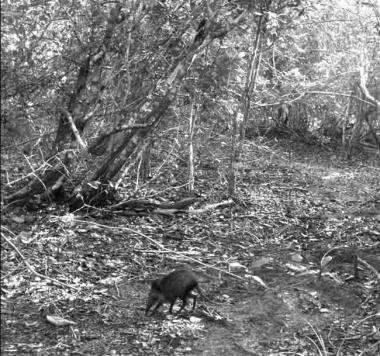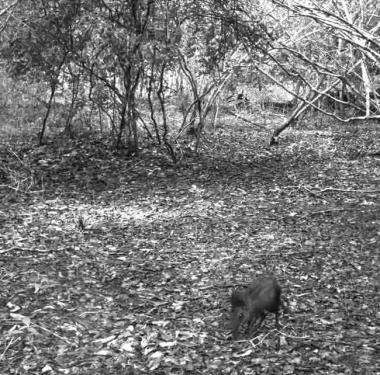Elusive elephant-shrew found in African forest

Conservationists researching the biodiversity of the Boni-Dodori forest on the coast of north-eastern Kenya were thrilled to capture pictures of the bizarre mammal.
The Zoological Society of London (ZSL) and the Kenya Wildlife Service (KWS) photographed the mystery animal and believe it may be a new species of giant sengi, otherwise known as an elephant-shrew (Macroscelidea).
Camera traps were set up in the remote forest after Grace Wambui, a fellow of ZSL’s EDGE of Existence programme spotted an elusive elephant-shrew she didn’t recognise in the area.
There are currently only 17 species of elephant-shrew known to science, all endemic to Africa. The animals are more closely related to elephants than shrews, despite being relatively small creatures, and got their peculiar name because of their long, flexible, trunk-like nose.
ZSL senior field conservation biologist, Dr Rajan Amin said: “This is an important discovery. The whole team was very excited to capture pictures of this mammal.
“We will continue our work to document the forest’s rich biodiversity and to determine if this is a new species of elephant-shrew. The findings of our study are highlighting the conservation importance of these unique coastal forests.”

Sam Andanje from the KWS said: “Prior to our study, the biodiversity of the Boni-Dodori forests was poorly understood as a result of limited access due to security problems and poor infrastructure.
“This discovery has underlined the conservation significance of these isolated forests. Unfortunately, they are highly threatened by on-going rapid coastal development and there is now an urgent need for an effective management plan.”
Galen Rathbun from the California Academy of Sciences said: “Once DNA samples have been collected, we look forward to conducting the genetic analysis required to determine whether or not this is indeed a new species of elephant-shrew.
“With their ancient and often misunderstood ancestry, their monogamous mating strategies, and their charismatic flexible snouts, they are captivating animals. It is always exciting to describe a new species—a necessary precursor for ensuring that the animals are protected.”
Provided by Zoological Society of London



















